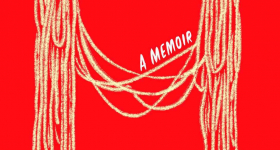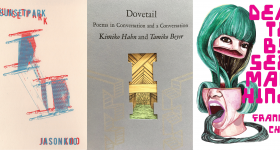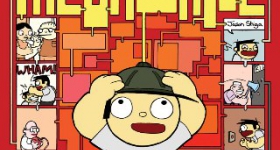What do yakuza gangsters, rogue catering companies, sumo wrestlers, and a giant gorilla rampaging through the streets of New York City have in common? These characters inhabit the world of Johnny Hiro, an ordinary college-aged underpaid sushi busboy who often finds himself landing in extraordinary situations.
In Johnny Hiro: How to Pay the Bills graphic novelist Fred Chao chronicles the everyday struggles of his likeable hero, whose chief aim is to provide a decent life for his girlfriend Mayumi. Chao’s stories revolve around a group of characters often thrust into outlandish circumstances that stretch the boundaries of reality. Whereas his first volume Johnny Hiro, Half Asian, All Hero featured our protagonists outrunning Godzilla-sized monsters, businessmen turned into samurai warriors, and vengeful waiters from a rivaling restaurant, this second volume adopts a different rhythm, highlighting the domestic struggles required to eke out a living, thus providing an even deeper richness to the characters introduced in his first graphic novel.
In the opening story, Amanda, John’s ex-girlfriend from college, resurfaces in his life, creating intriguing and unsettling dynamics between him and Mayumi. Within seconds after their reunion, Amanda is abruptly kidnapped by an enormous gorilla that tramples through the city, whisking her off towards the Manhattan Bridge. John once again dives into the mayhem as his instincts steer him from one situation to the next. In the midst of this pandemonium, John bickers with Mayumi over his breakup with Amanda, fending off her questions about why he has never mentioned his ex-girlfriend before.
On a lighter note, side characters such as Mr. Masago, John’s stingy boss, assume center stage in other stories in this volume. For instance, when John leaves for vacation during the Thanksgiving holiday, the spotlight shifts to Mr. Masago, who continues to run the sushi restaurant in spite of the year-end festivities: “Missing Thanksgiving may seem sad to an American, but it’s no big deal to Masago. He never grew up with the holiday, never developed a fondness for it. He’s had the restaurant open on Thanksgiving ever since he moved to New York, and it usually becomes home for three or four Japanese tourists. A quiet night, but not a bad one at all” (138). In subtle yet poignant overtones, Chao captures the delicate nuances of an immigrant living in America without objectifying him as a foreigner; instead, Chao paints a sympathetic portrait of a man trying to make an honest living in America.

The artist and writer, Fred Chao
Chao’s trademark signature of peppering stories with elements of magical realism and fantasy abounds. The cast comprises a giant gorilla resembling King Kong, a rogue catering company seeking to sabotage a soirée in the town mayor’s mansion, sumo wrestlers battling yakuza gangsters, and other animated characters that run rampant through the pages of Chao’s interwoven narrative.
What’s most intriguing about this collection of interconnected stories is the power of stories that fashion characters who take ownership of their lives as they simultaneously make choices that impact others. Big stories, side stories, back stories, and little stories—all these narratives integrate into a larger universal experience: “It’s odd, the way stories work. They’re important because they help make sense of our lives. But stories often obscure the way things actually happen, because so much is dependent on tiny events that intertwine but don’t make the narrative cut."
Likewise, during Thanksgiving dinner, John reflects upon his memories of gratitude: “At every Thanksgiving there’s a moment we say what we’re thankful for. The answer is always the same: Loved ones. We say it in different ways, tell stories that make the sentiment seem less cheesy, but when forced to reflect on it, that’s what it comes down to." Each unique story, no matter how idiosyncratic and despite its seeming insignificance, bears a profound impact upon the grand tapestry of life, for we are all connected to each other in some fashion, shape, or form.
The peculiar stories of Johnny Hiro delight and fascinate once more: What new adventures lie ahead for the young sushi busboy? Will he make ends meet to secure a decent life for Mayumi? Can he stave off the forces that threaten his relationship and sanity? Will he ever achieve a copacetic existence? Find out in this second volume featuring the misadventures of an ordinary hero in an extraordinary world.
***
Jerry Dear, Information Strategist at the San Francisco Public Library, spends his time exploring the intricate world of online research and also teaches at City College of San Francisco. In his free time, he indulges in graphic novels, anime, manga, and Asian American film and literature.









Comments